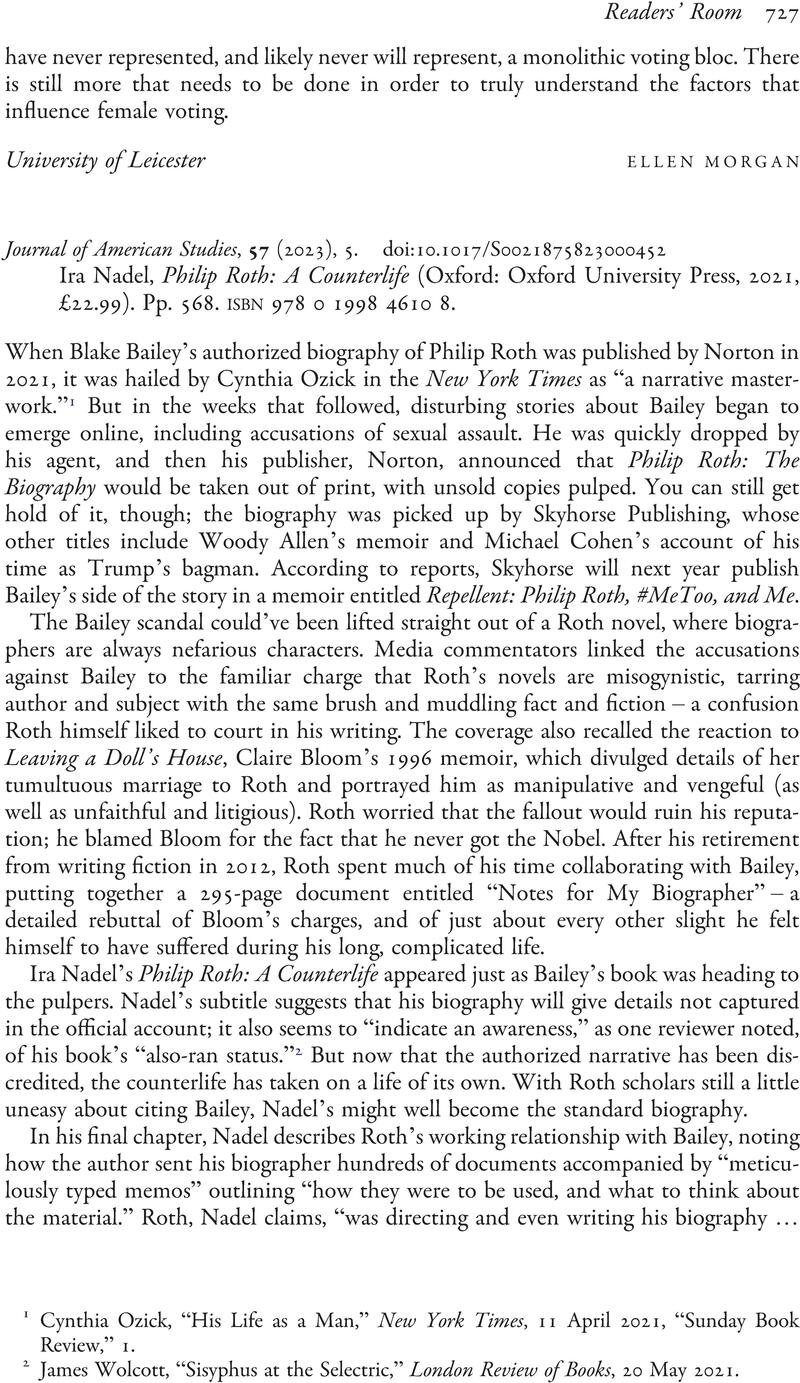No CrossRef data available.
Published online by Cambridge University Press: 08 February 2024

1 Cynthia Ozick, “His Life as a Man,” New York Times, 11 April 2021, “Sunday Book Review,” 1.
2 James Wolcott, “Sisyphus at the Selectric,” London Review of Books, 20 May 2021.
3 Roth, Philip, The Human Stain (London: Vintage, 2000), 22Google Scholar.